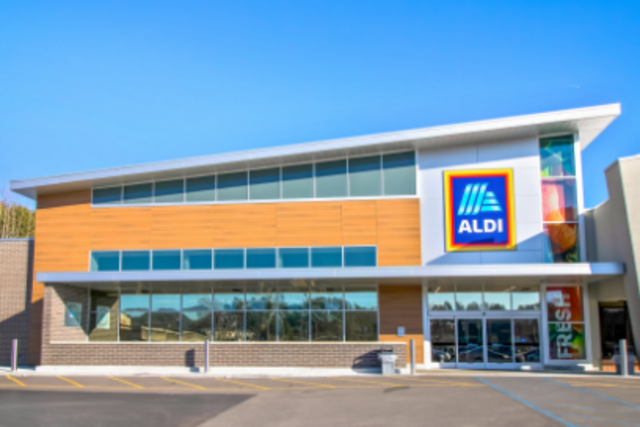YieldTalk news and links - 06 November 2021
Study says women are better investors than men 👩✊; Reg CF tops $1B in capital raised; the race to redevelop offices into apartments

New/Updated Platform Reviews
Awning is an app for finding single-family rental properties in specific markets (currently several major metros in California and Texas). Awning acts as the brokerage and refers buyers to local property managers. Awning is not, technically speaking, a “crowdfunding” platform. But many investors exploring crowdfunding and online alternative investments are looking for opportunities in real estate, and Awning is among several sites looking to make searching for and buying direct rental properties much more like ecommerce and crowdfunded investing. Our rating Very Good.
***
Hedonova is a recently launched hedge fund offering accredited investors exposure to a wide range of alternative asset classes such as real estate, art, fine wine, litigation finance, and startups – often investing through the same platforms we cover here at YieldTalk – with a very low $1,000 minimum investment. The fund has a short track record and prospective investors should be sure to understand the hedge fund fee model, but Hedonova represents an attractive way to gain exposure to a diverse pool of alternative assets with an exceptionally low investment minimum. Our rating: Excellent.
🎉 Hedonova is also offering YieldTalk readers a $50 sign-up bonus, which is effectively an immediate 5% return on a $1,000 investment 📈. Click here to claim your $50 bonus 👈
Worth Reading this Week
A roundup of insights and interesting links from around the investment crowdfunding ecosystem.
👩✊ A recent study from Fidelity showed that on average, over a 10-year period female customers earned better returns than male ones. The context of the study is the “regular” stock market, but the message is a valuable one for any type of investing: beware of overconfidence and only speculate with what you can afford to lose:
If you fear too little, you’re more likely to get hit hard when markets fall, since you’ll have too much money in the wrong kinds of investments. Similarly, too much greed can lead to too much risk. As for overconfidence, [William J.] Bernstein, who is the author of books, including “The Investor’s Manifesto,” suggests a self-administered test question: How certain am I of what I’m doing? “In finance, if you’re certain of anything, you’re out of your mind,” he said.
📜 Back in September, we noted that the draft infrastructure bill working its way through Congress contained provisions that would have dramatically cut back the options for investors to use self-directed IRAs for alternative investments like startups. Well, it turns out those provisions have been dropped from the latest draft of the bill.
Startups
🚀 According to research from Crowdfund Capital Advisors, Regulation Crowdfunding (known as Reg CF for short) has hit a new milestone, topping $1 billion in total capital raised. Almost half of that total has come in 2021, reinforcing the rapid growth the sector has seen this year, driven in part by the SEC’s lifting the cap on the total amount a company can raise from $1.07M to $5M:
Year to date as of Q3, approximately $409 million has been raised with 1,177 individual offerings.
***
One of the best things about that growing investment crowdfunding ecosystem is that it’s helping to fund businesses that have long been underserved by traditional venture capital (in particular businesses led by women and people of color). As investment crowdfunding continues to demonstrate that there’s plenty of great opportunities out there that don’t fit the traditional VC mold (in the first half of 2021, only 3.5% of overall VC capital went to women and people of color, but 40% of issuers via Reg CF are women and people of color), it seems those traditional VC firms are taking notice:
Companies with female founders lagged in the overall recovery of the VC market, but they’re now on track to receive more VC investments than at any point in the past decade, capturing 25% of total deals, or more than $40 billion, as of Sept. 30. And by some metrics in the PitchBook report, fund-raising by female-founded companies is even outpacing the overall VC market.
Another way that venture funding is diversifying is the growth of networks of black angel investors joining together to help fund promising companies and training black founders and executives on how to become angels themselves:
Programs such as BLCK VC’s Black Venture Institute are even training founders and executives on how to become angel investors (people who invest their own money) and professional venture capitalists (people who invest a fund’s money). The drive to increase the number of Black check-writers dovetails with the broader rise in the number of people investing in startups through all sorts of mechanisms. (Emphasis added)
***
A column in CrowdfundInsider posits 3 trends likely to shape investment crowdfunding in 2022, including continued job creation and the likely emergence of more trading platforms:
As we move into 2022, the equity crowdfunding industry will continue to build a foundation for underserved people to gain access to the financial system in terms of meaningful investments. Anyone—regardless of social status or annual income—should be able to begin investing in companies that hold meaning for them. It’s about radical accessibility and execution. Looking to the future, we’re building a system that allows for more equal access for both the issuer and the investor.
Real Estate
Hardly a week goes by without a piece somewhere on whether the current (very hot) housing market is cooling off – or even crashing. This time around it’s Ivy Zelman, a Wall Street analyst who said in 20005 that the US housing market had topped out:
Zelman, 55, isn’t forecasting a nationwide crash on the scale of the last bubble, which was magnified by risky subprime mortgage lending. But the signs of trouble look familiar, she says: Investors are distorting the market by driving up prices beyond the reach of primary buyers, and builders with growing construction pipelines are bidding up land values.
***
Among the questions about the “new normal” in the wake of the Covid-19 pandemic is what will happen to all of the downtown office space that’s likely to remain vacant for some time as more companies shift to hybrid and remote models, especially among the same tech-driven growth companies likely to be active in urban centers like New York, Boston, and San Francisco. While many suburban commuters will likely never return to daily trips downtown, there’s no shortage of demand for housing in those same vibrant downtown neighborhoods, leading to a rapid increase in the number of conversions of what was office space into apartments:
Developers are likely to finish a record 20,100 new apartments in 2021 in buildings converted from other uses, according to Yardi Matrix. That will make 2021 the busiest year for conversions in the last 10 years. It’s also up sharply from an average of about 12,000 a year over the last five years.
Crypto
Back in January, JPMorgan stirred the pot with a long-term price target for Bitcoin of nearly $150K. As Bitcoin now hovers above $60K following a summer slump, JPMorgan is holding firm in that target, citing inflation concerns as a key driver for demand:
“The re-emergence of inflation concerns among investors during September/October 2021 appears to have renewed interest in the usage of bitcoin as an inflation hedge,” JPMorgan strategist Nikolaos Panigirtzoglou said. “Bitcoin’s allure as an inflation hedge has perhaps been strengthened by the failure of gold to respond in recent weeks to heightened concerns over inflation,” he said. Inflation is running at a 13-year high in the US and has surged around the world.
During Bitcoin’s last run-up (wow, 2017 feels like a looooong time ago!) I wrote about how even if Bitcoin is just a speculative price bubble, speculative bubbles play a really important role in rapidly diffusing important innovations:
To put it another way, the only way a genuinely revolutionary technology (the telegraph, railroads, the computer, the internet…) can actually produce a revolution is if it’s deployed systemically. And because that’s incredibly expensive to do, one way our economy seems to marshal sufficient capital for the job of quick diffusion of innovation is through the promise of great wealth at the heart of any speculative bubble.
***
NFTs (“non-fungible tokens”) have many interesting potential uses, though have mostly been attracting attention as a form of digital collectible. Although you’ve probably at least heard about NFTs, for most people the process of actually creating, buying, and selling them remains fairly technical and opaque. Coinbase wants to change that with a new NFT marketplace:
Today, we’re announcing Coinbase NFT, a peer-to-peer marketplace that will make minting, purchasing, showcasing, and discovering NFTs easier than ever. Just as Coinbase helped millions of people access Bitcoin for the first time in an easy and trusted way — we want to do the same for the NFTs.
Odds and Ends
- Small-business focused lending platform SMBX (our review here) announced they’ve raised $11.5M in seed funding
- Real estate platform Fundrise (read our review here) reports “remarkable” Q3 results, with some investments jumping by as much as 50%.
- Sherwood Neiss from Crowdfund Capital Advisors produced a handy 8-minute video recap of Q3 in Reg CF fundraising
- “Exotic” alternatives platform YieldStreet (read our review here) announced it’s now offering VC investments in private companies.
Email subscribers get this roundup before it's published here. Join the thousands of investors who get alternative-investor education, news and resources -- along with notable investment offerings -- delivered right to their inbox:
Share this post:


